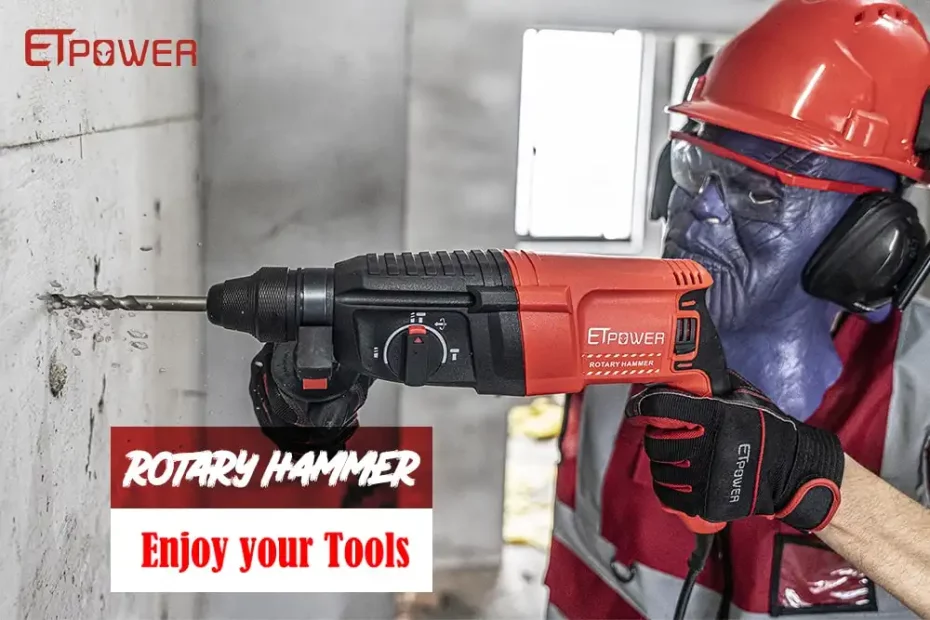There are only two tools that are specifically designed for boring holes that can be used to drill a screw into concrete: a rotary hammer and a hammer drill.
The hammer drill, an improved version of the conventional drill, is typically used when drilling holes up to 3/8″ in diameter or soft materials like light-duty concrete or masonry. The rotary hammer contains a rotating component that causes the hammer to move in a more circular motion, producing a more powerful force that can make bigger or deeper holes in masonry or concrete. If you need to drill a hole that is larger than 1/2 inch or through harder concrete, this is rotary hammer drill you need.
Comparison for hammer drill and rotary hammer
| Hammer Drill | Rotary Hammer | |
| Function: | Light-duty drilling for holes up to 3/8 ” diameter in concrete or masonry | Larger holes or harder concrete are recommended due to its strength and shock-absorbing capabilities. |
| Used by: | Handymen who do occasional odd jobs, Amateurs, DIY homeowners. | Construction sites, professional construction and concrete workers. |
| Material used to drill: | Soft concrete, masonry or brick | Harder concrete |
| Drill holes: | Diameter with 3/16″ to 7/8″ | Diameter with 1/4″ to 2″ |
| Mechanism: | Rapid back and forth action of rotate-and-hammer while drilling; drill into concrete without burning the bit. | Same “ rotate-and-hammer ” as hammer drills, but with a piston mechanism for a stronger hammer action. |
| Weight : | 4 to 8 pounds | At 14 to 18 pounds, a rotary hammer is much heavier, larger |
Mechanism and Impact
Both rotary hammers and hammer drills pound their bits as they spin and crush concrete, but the two instruments’ pounding mechanisms operate differently.
A hammer drill is very similar to a drill that a typical non-professional or DIY homeowner might own, with mechanisms that drive drill bits forward as the drill rotates, resulting in a high-speed pulsing hammer-like action. Power is generated by rotating ribbed clutch plates, and impact occurs when two ribbed metal discs click in and out against each other. The drill hammer uses the same straight-shank bits as a regular drill. The torque generated by drilling concrete may cause bits to slip in the chuck. This hammering technique is useful for projects that require drilling into brick, block, concrete, or other masonry surfaces.
In a rotary hammer, a cylinder of air is compressed by a piston, which results in bit beating. Because of this action, the rotary hammer not only generates more power, but it is also much easier on the hands despite being heavier, larger, and bulkier. Because of this mechanism, rotary hammers make it easier to work with harder materials like concrete or strong masonry.
